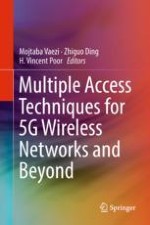2019 | OriginalPaper | Buchkapitel
5. NOMA: An Information-Theoretic Perspective
verfasst von : Mojtaba Vaezi, H. Vincent Poor
Erschienen in: Multiple Access Techniques for 5G Wireless Networks and Beyond
Aktivieren Sie unsere intelligente Suche, um passende Fachinhalte oder Patente zu finden.
Wählen Sie Textabschnitte aus um mit Künstlicher Intelligenz passenden Patente zu finden. powered by
Markieren Sie Textabschnitte, um KI-gestützt weitere passende Inhalte zu finden. powered by
